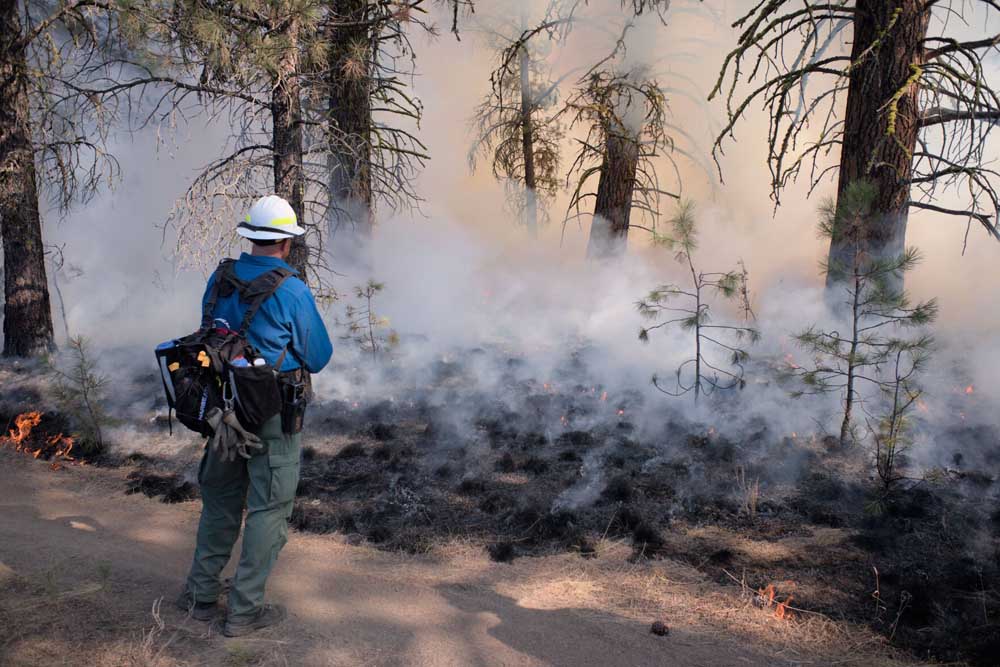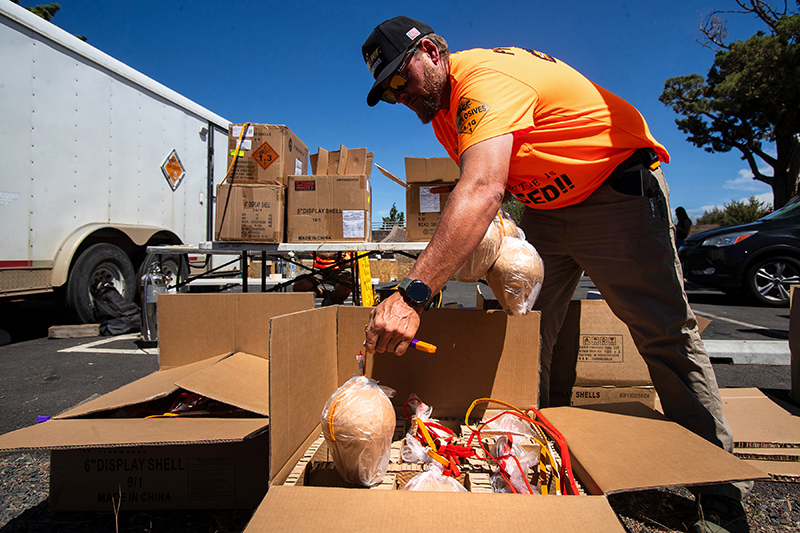Fire crew faced harassment before burn boss arrested
Published 2:59 pm Monday, March 25, 2024

- Burn boss Ricky Snodgrass monitors the Starr 6 burn in Bear Valley on Oct. 19, 2022.
Ricky Snodgrass, a U.S. Forest Service firefighting burn boss, was literally fighting fire with fire on a warm afternoon in the Malheur National Forest when things got hot.
His crew was executing an intentionally set, prescribed burn that land management officials use to reduce natural, hazardous fuels that can feed more extreme flames.
Late afternoon on Oct. 19, 2022, that controlled burn lost control to what his lawyers described as “sudden unforeseen high winds” and jumped a highway, scorching about 20 acres of private land.
Around the same time, Snodgrass called law enforcement to report people harassing the fire crew by driving aggressively in an area with a history of strident anti-government activity, including an armed takeover in 2016 of the Malheur National Wildlife Refuge.
The aggressive actions against Snodgrass’ crew, which followed previous abrasive incidents in the area, included swerving in front of fire engines, and almost hitting a Forest Service four-wheeler, according to firefighters with knowledge of the incident. They did not want to be identified because of the sensitive nature of the ongoing case.
“There’s a very strong anti-government sentiment in the part of what we refer to as Eastern Oregon, where I live. It’s my home now,” said Eric Franta, a National Federation of Federal Employees steward who has fought wildfires for 17 seasons with the Forest Service. “And particularly in Grant County, where the Malheur is located.”
Although Snodgrass called the cops, when Grant County Sheriff Todd McKinley responded to the fire scene, he busted Snodgrass for reckless burning, a Class A misdemeanor, while the flames continued — removing him “from his crew in the middle of its active effort to extinguish the fire,” according to his defense brief. He was not indicted and arraigned until last month.
In a message to employees soon after his arrest, Forest Service Chief Randy Moore said it “was highly inappropriate under these circumstances, and I will not stand idly by without fully defending the Burn Boss and all employees carrying out their official duties as federal employees. This employee should not have been singled out …”
Snodgrass’ arrest has his colleagues wondering if being a burn boss is worth the potential hassle.
“With what happened to Snodgrass, there’s a lot of us just questioning the risk involved and if it’s worth it,” said Jeremiah Marsh, a burn boss in Wallowa County. Citing anti-government attitudes, said Marsh, a National Federation of Federal Employees local vice president representing employees, including Snodgrass, in five national forests. “I really don’t like going down to Grant County.”
Grant County District Attorney Jim Carpenter declined an interview request but did provide a news release issued by his office shortly after the arrest. “To be clear,” it said, “the employer and/or position of Snodgrass will not protect him if it is determined that he acted recklessly. That the USFS was engaging in a prescribed burn may actually raise, rather than lower the standard to which Snodgrass will be held.”
In an apparent reference to political tensions in the area, Carpenter added “many will attempt to hype this into something that it is not. The question is whether one neighbor, given the prevailing conditions, was reckless when starting fires adjacent to another neighbor.”
Yet, the Malheur connection and the political atmosphere are too obvious to ignore.
In January 2016, armed, right-wing extremists, angry about government land management practices, seized control of the Malheur National Wildlife Refuge, leading to a 41-day standoff with federal authorities, who shot and killed LaVoy Finicum, a spokesman for the occupiers. About 20 people were arrested, including leader Ammon Bundy, who was notorious for his anti-government activities.
Glenn Palmer, who was sheriff at the time, expressed favor with the occupiers, calling them “patriots,” and supported the Bundy family, according to local news reports. That fueled a continuing sense of dissonance between federal and local authorities.
McKinley, formerly a deputy under Palmer, declined to comment. He defeated Palmer in 2020, saying, according to Oregon Public Broadcasting, “I could see more and more that it [the sheriff’s office] was going in a way that I could not support. … It appeared to me that it was just serving certain individuals in the community, and not the entire community.”
Some small government advocates in that area back the Greater Idaho campaign to move a large portion of Oregon, including Grant County, into Idaho “so that conservative counties can become a part of a red state.” Donald Trump, who was not federal employee friendly when in the White House, won the county’s 2020 presidential election with 76% of the vote. It’s a sparsely populated place, with only 7,200 people, in 4,528 square miles, less than two people per square mile.
Grant County and other mountain west rural counties have a long history of “substantial tension” with Washington, according to John Kincaid, a professor of government and public service at Lafayette College in Easton, Pennyslvania. In 1995, county voters approved a symbolic measure “prohibiting the federal Bureau of Land Management and Forest Service from owning and managing federal lands within Grant County,” said Kincaid, who also is a National Academy of Public Administration fellow. “In 2002, the county asked Congress to give the county title to all federal lands,” which is about 60% of Grant’s territory, in another symbolic effort.
The Forest Service will continue its work there, even if some don’t appreciate it.
“Our mission remains the same,” said Wade Muehlhof, a Forest Service spokesman, “regardless of where Forest Service employees are performing their duties.”








